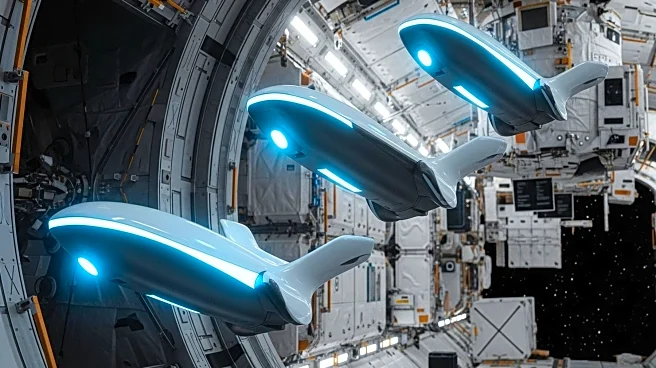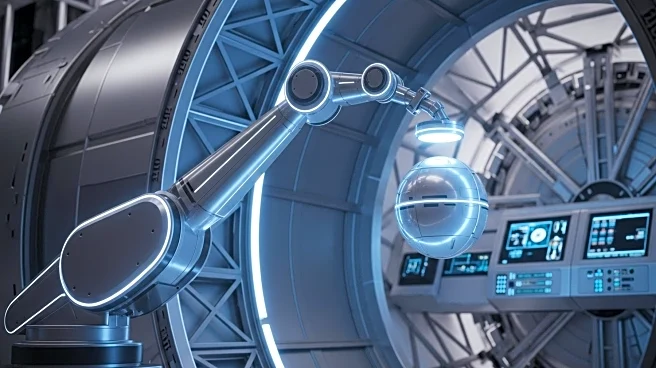What's Happening?
Voyager Technologies, the majority shareholder of Starlab Space, has selected Vivace Corp. to manufacture the primary structure of Starlab's commercial space station. This development marks a significant step towards launching Starlab as a potential replacement for the International Space Station (ISS) by 2029. Vivace plans to utilize NASA's Michoud Assembly Facility in New Orleans for the project, which has previously been involved in manufacturing the core stage of the Space Launch System rocket for the Artemis II mission. Starlab's structure is designed to be about 8 meters in diameter, offering approximately 40% of the pressurized volume of the ISS. The program has received $217.5 million from NASA to support its development, aiming to provide space for governments and commercial entities to conduct research and develop advanced materials.
Why It's Important?
The partnership between Voyager Technologies and Vivace Corp. is crucial for advancing the development of commercial space stations, which are expected to play a significant role once the ISS is decommissioned in the 2030s. Starlab's larger structure is intended to support continuous crewed habitation and reduce the need for spacewalks, enhancing its capability to support research and commercial activities. This initiative could generate substantial economic benefits by offering a platform for scientific research and technological testing in space. The competition to replace the ISS is intense, but Voyager's commitment to a larger station may position Starlab as a leading option, potentially influencing the future landscape of low Earth orbit commercial stations.
What's Next?
Vivace Corp. is expected to complete the initial test structures for Starlab by the end of the year, moving the project closer to its anticipated launch in 2029. As the development progresses, Voyager Technologies will continue to secure funding and partnerships to ensure the successful deployment and operation of Starlab. The space station's ability to support continuous crewed missions from the outset will be a key factor in its competitive positioning against other commercial stations. Stakeholders, including NASA and commercial entities, will closely monitor the project's advancements, as it promises to offer new opportunities for research and development in space.
Beyond the Headlines
The development of Starlab highlights the growing trend towards privatization and commercialization of space exploration. As private companies increasingly take on roles traditionally held by government agencies, ethical and regulatory considerations will become more prominent. Ensuring safe and sustainable operations in space will require collaboration between public and private sectors, as well as international cooperation. The success of Starlab could pave the way for more private ventures in space, potentially leading to new economic models and opportunities for innovation.










